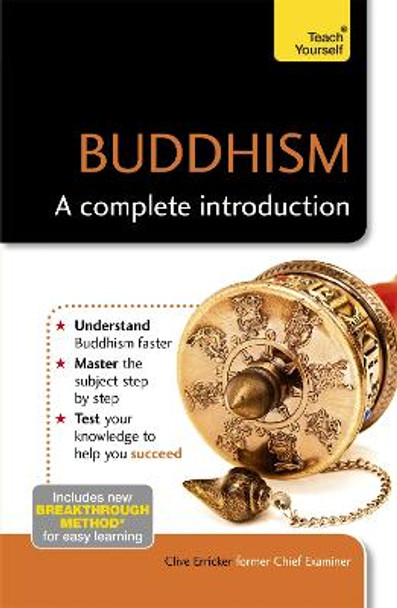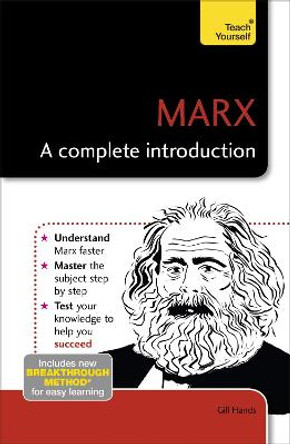Description
Buddhism: A Complete Introduction is a comprehensive and easy-to-use introduction, designed to give you everything you need to succeed, all in one place.
Written by a leading expert, this book will help you if you are studying for an important exam or essay, or if you simply want to improve your knowledge.
It is structured to mirror the way in which Buddhism is usually taught, starting with the life of the Buddha through to the prospects of Buddhism for the next generation.
The book covers all the key areas that are considered central to Buddhism, including the Buddha's teachings, the scriptures and schools, the role of meditation and the moral and ethical context. It uses jargon-free English and includes features such as guided further reading and end of chapter questions to ensure that you understand all the concepts covered.
Buddhism: A Complete Introduction includes:
Chapter 1: Buddhists and Buddhism
Who are Buddhists?
The Three Jewels
The Three Refuges
Buddhist Practice
In conclusion
Chapter 2: The life of the Buddha
The Buddha's significance
The Four Sights
Going forth
Self-mortification
The enlightenment
Turning the wheel of the dharma
The mission
The growth of the Sangha
Paranirvana
In conclusion
Chapter 3: The Buddha's teaching
The first Nobel Truth: all is suffering (dukkha)
The second Noble Truth: the origins of suffering (samudaya)
The third Noble Truth: the cessation of suffering (nirodha)
The fourth Noble Truth: the path to the cessation of suffering (magga)
Chapter 4: Buddhist scriptures and schools
The Theravada Scriptures
The Mahayana Scriptures
Pure Land Buddhism
The Ch'an and Zen Schools
The Tibetan Scriptures
In conclusion
Chapter 5: Meditation and devotion
1 Mind and heart
2 Heart and mind
3 Devotion as homage
4 Salvific devotion
In conclusion
Chapter 6: Ethical conduct
Sila skilfulness
The practicality of buddhist ethics
Working on yourself and others
The precepts and the dharma
Renunciation
In conclusion
Chapter 7: Moral Issues
The natural world
Human society
In conclusion
Chapter 8: The social order
Ordination
Celibacy
Weddings and marriages
Family life
Death and dying
In conclusion
Chapter 9: Festivals and ceremonies
Theravada festivals
Tibetan festivals
Japanese and Chinese festivals
Western Buddhist festivals
In conclusion
Chapter 10: Budhist today: East and West
The spread of Buddhism
Buddhism in India
The revival of Buddhism
Buddhism in South-East Asia
Missionary activity
Tibetan Buddhism
Buddhism in the West
In conclusion
Chapter 11: Transition, adaptation and influence: prospects for Buddhism in the twenty-first century
Into the twenty-first century
Views from the West
Transmitting Buddhism to a new generation
In conclusion
Learn effortlessly with a new easy-to-read page design and added features:Not got much time?
One, five and ten-minute introductions to key principles to get you started.
Author insights
Lots of instant help with common problems and quick tips for success, based on the author's many years of experience.
Test yourself
Tests in the book and online to keep track of your progress.
Extend your knowledge
Extra online articles to give you a richer understanding of psychology.
Five things to remember
Quick refreshers to help you remember the key facts.
Try this
Innovative exercises illustrate what you've learnt and how to use it.
About the Author
Clive Erricker was Chief Examiner in World Religions for the International Baccalaureate. A teacher of religious studies for over 30 years, he has written extensively on Buddhism and other world religions.
Book Information
ISBN 9781473609440
Author Clive Erricker
Format Paperback
Page Count 336
Imprint Teach Yourself
Publisher John Murray Press
Weight(grams) 272g
Dimensions(mm) 200mm * 128mm * 26mm


![Buddhism: A Complete Introduction: Teach Yourself by Clive Erricker 9781444103496 [USED COPY] Buddhism: A Complete Introduction: Teach Yourself by Clive Erricker 9781444103496 [USED COPY]](https://cdn11.bigcommerce.com/s-zkx5lhzlf8/images/stencil/444x444/products/5040539/5039749/9781444103496__33519.1722905047.jpg?c=1)






